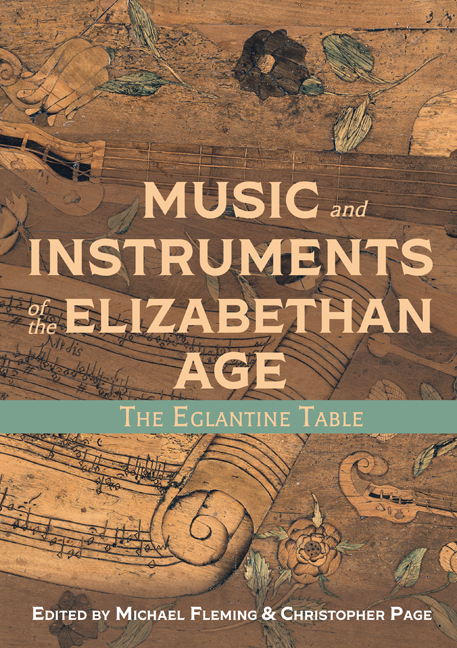Book contents
- Frontmatter
- Dedication
- Contents
- List of Illustrations
- Foreword
- Acknowledgements
- Note to the Reader
- List of Abbreviations
- Introducing the Eglantine Table
- Part I Silent Things
- Part II Music and Instruments
- Part III Broader Views of the Eglantine Table
- Appendices
- Glossary
- Bibliography
- List of Contributors
- Index
- Plate section
15 - Pipers, Fiddlers and the Musical Lives of the Majority
Published online by Cambridge University Press: 24 March 2021
- Frontmatter
- Dedication
- Contents
- List of Illustrations
- Foreword
- Acknowledgements
- Note to the Reader
- List of Abbreviations
- Introducing the Eglantine Table
- Part I Silent Things
- Part II Music and Instruments
- Part III Broader Views of the Eglantine Table
- Appendices
- Glossary
- Bibliography
- List of Contributors
- Index
- Plate section
Summary
The Eglantine Table is an unmistakably aristocratic artefact that proclaims privilege, representing in exquisite form the wealth, leisure and entertainments that characterised life in society's highest ranks. It would be a mistake, however, to suppose that its elaborate imagery was originally viewed only by members of the Elizabethan social elite. Perhaps the people who saw it most frequently were the staff who kept Bess of Hardwick's great houses running by carrying messages, serving food and, most importantly, polishing furniture. Of course, we cannot know how many of them paused and peered at the music-in-marquetry, connecting it with their own experiences and interpreting it for themselves. Perhaps the individuals most likely to show such interest, given the chance, were instead the visiting musicians, most of them certainly from the lower and middling ranks of society, who regularly spent time in the house as performers and teachers. Their presence warns us against imagining the musical lives of Bess of Hardwick and her aristocratic associates as somehow sealed against the influence of wider society. The beauty and sophistication of the Table, rich with European influence, may seem to speak of such separation, but, if we look closely, its musical components also evoke the mutual influence of ‘high’ and ‘low’ culture in English music of the period.
Musicians of the sixteenth and early seventeenth centuries were intermediaries par excellence. Many of them must have performed both in manor houses and alehouses, providing entertainment for anyone who was willing to reward them with money, food or drink (ale was sometimes referred to as ‘fiddlers’ wages’). Their names were not necessarily recorded – unless they were in trouble – but references to musicians crop up in many sources, including civic archives, churchwardens’ accounts, ecclesiastical court books and the records of expenditure kept by stewards in the mansions of the mighty. In the last of these environments, aristocrats and visiting musicians all had to negotiate a potentially difficult situation. Instruments such as lutes, viols and virginals were often represented by literary commentators as properly the preserve of the elite, but aristocratic practitioners were invariably taught to play by less privileged individuals who came to the house by appointment.
- Type
- Chapter
- Information
- Music and Instruments of the Elizabethan AgeThe Eglantine Table, pp. 205 - 218Publisher: Boydell & BrewerPrint publication year: 2021



